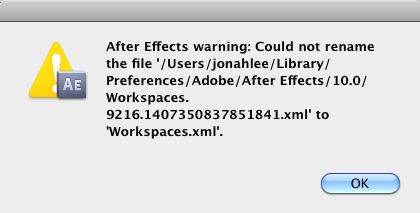

One thing I’ve noticed with the Stereo 3D Rig option is that all the lights and shadows seem to be lost in the final stereo comp. Light falloff can be adjusted on any light (except ambient) so lighting your scene now has a much richer and realistic result. Just like in the real world, not all light is a strong, constant beam that travels indefinitely and lands on everything in its path. This is helpful for maintaining the stereo window when doing extreme zooms or moving objects in the frame.Īdjusting stereo convergence with 3D Glasses effect-before.Īdjusting stereo convergence with 3D Glasses effect-after.Īfter Effects CS5.5’s Light Faloff option allows better control of light in 3D compositions.

You can control the convergence of the cameras with the new enhanced 3D Glasses effect and even animate it over time. You can also use the Timecode effect to graphically display the timecode in compositions. The source timecode data is displayed in the project panel and allows you to pinpoint specific frames, or to search and sort your footage files in a project. Imported footage now includes source timecode, which is extremely important for editors and VFX groups where people need to share footage file data and keep everything in sync. Changing the shape of your simulated Iris can create some beautiful in-lens effects on the highlights in your footage as well as realistic bokeh.

Then you can apply the Camera Lens Blur to your shot to create a simulated rack-focus effect. You can use the Roto Brush tool (introduced in After Effects CS5) to select your foreground images and create a matte. This effect replaces the previous Lens Blur effect and also allows you to use a Blur Map to control the DOF. The Subspace Warp really tackles this problem well, which is great for lower-quality cameras and wide-angle lenses.Īnother feature that will give the Indie filmmaker a lot of post-production Depth of Field (DOF) control is the Camera Lens Blur effect. The warp part comes into play when trying to compensate for lens aberration and foreground object movement, which can make even a stabilized shot look odd. Stabilized shots can also be locked-down and the Warp Stabilizer can try to create the extended edges for you. But you can also select the Stabilize, Synthesize Edges option, in which the effect will attempt to use image data from previous and subsequent frames to fill in the blanks around the edges that would normally appear with the old Stabilize feature. Stabilization also results in some automatic cropping of your footage by default, as would be expected, and it does save the step of having to rescale and manually crop your layer. The Warp Stabilizer can be set to automatically crop your stabilized footage. The new Warp Stabilizer processes in the background while you work on other tasks. Yes, that’s right-the Warp Stabilizer is an effect, which means you can turn it on or off just like any other effect on a footage layer. While I missed the ability to define stabilization points at first, I quickly forgot about it once I dug into the parameters of the Warp Stabilizer effect. As an automated process, the new Warp Stabilizer does not give you control over the scale or rotation from selected points. Missing from After Effects CS5.5 (but present in previous versions) is the ability to select a point in the frame to stabilize around.


 0 kommentar(er)
0 kommentar(er)
